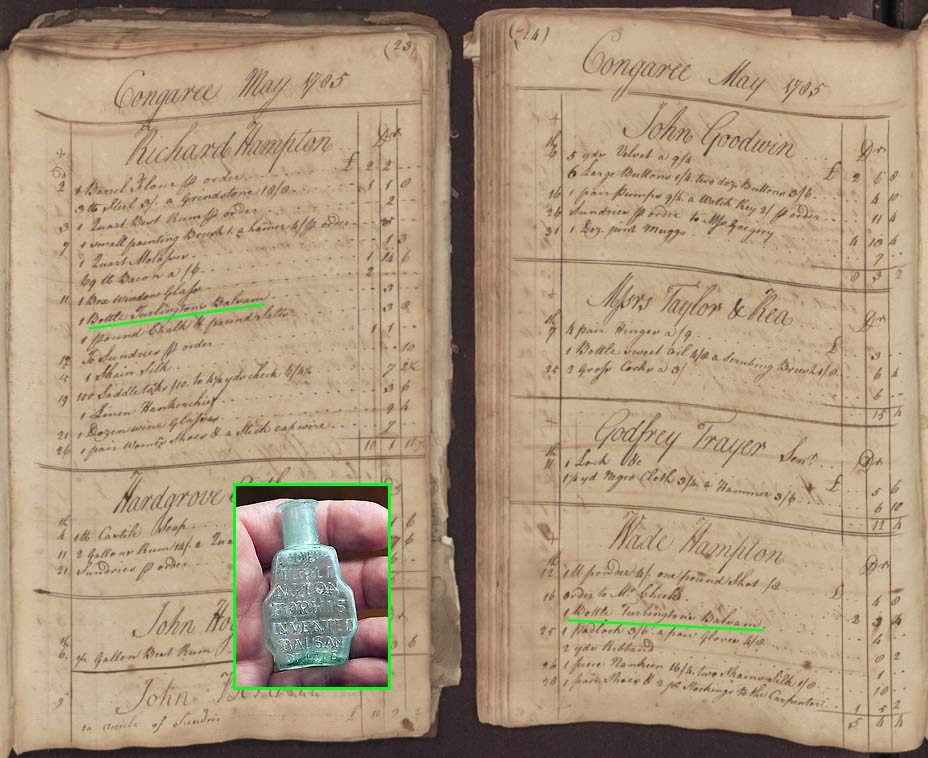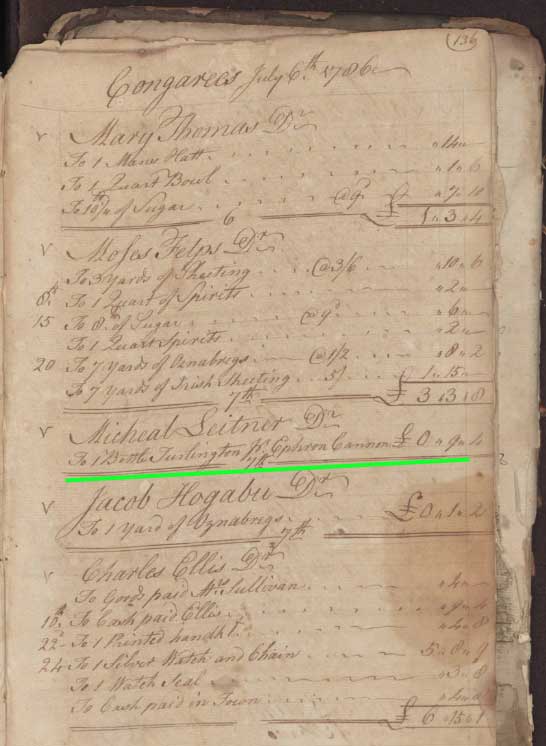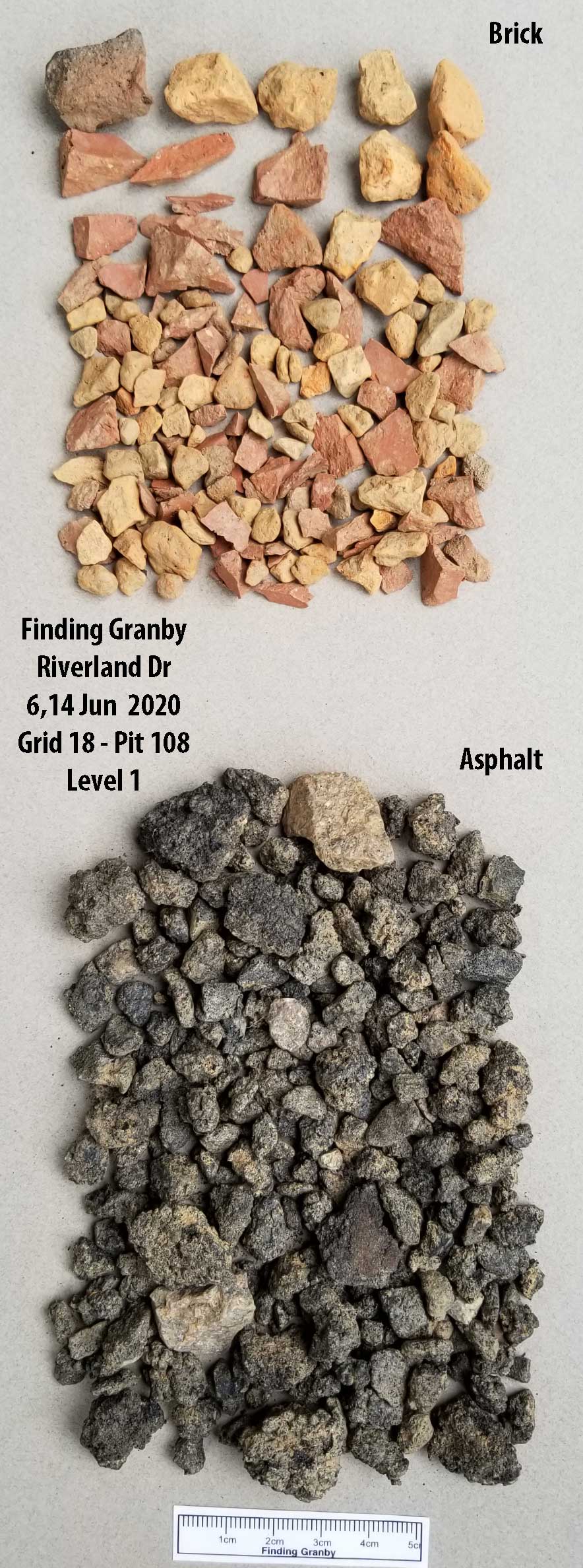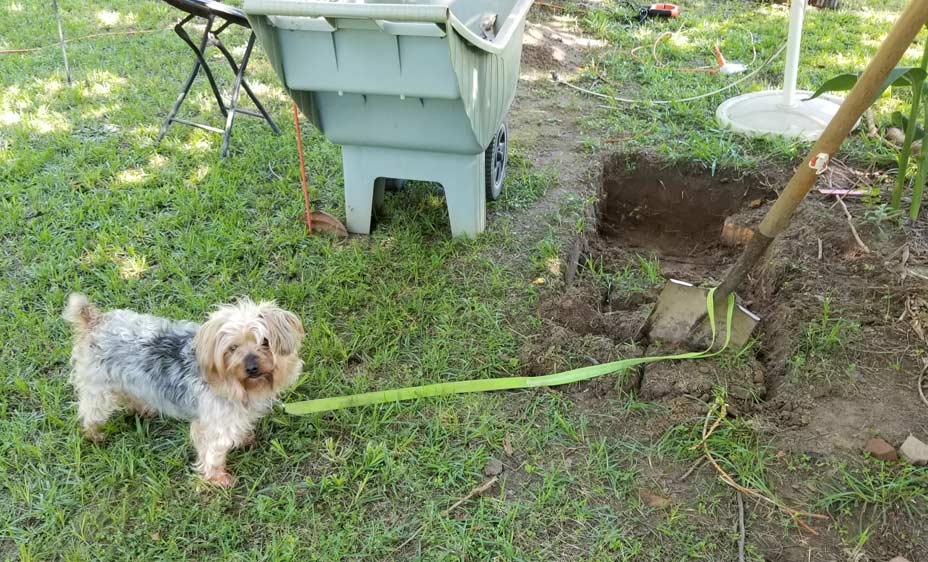Pit 108: Level 1
Completed by David Brinkman on June 6 and June 14, 2020. Pit 108 will become the first pit completed by just one person. I had little choice. After suffering a neck injury (and possible damage to the carotid artery), I had been experiencing bouts of extreme fatigue. While waiting on a scheduled ultrasound of my neck, two coworkers tested positive for the COVID-19 virus. I decided I had better be tested, so I returned to the same doctor's office. They did the test and informed me that my ultrasound would have to be canceled because of the pending virus test. A few days later, the doctor's office was shut down because 23 staff members came down with COVID-19. My test was negative, but I had potentially exposed myself to the virus on both visits to the doctor. So, I decided to self-quarantine for two weeks. That's why Pit 108 is the first solo pit (not counting the dog.) Six weeks later, I still have no results on an ultrasound that was finally done two weeks ago. Had there been a serious issue with my carotid artery, as a nurse told me last week, I would probably be dead by now.
I'm still here and happy to report that Pit 108 had several really cool finds.
Level one had artifacts sticking out of the ground. These were modern-day bricks. I quickly ran into the nightmare of Mulberry tree roots. Despite multiple efforts to kill this tree, which started growing about seven years ago, it won the battle and is now about 15 to 20 feet tall. I must say, however, that it is a great shade tree which really helped me in this solo effort. But, to my surprise, most of the Mulberry tree is underground. This proved to be a big challenge for a single digger. While pulling up cut roots, out popped what looked like a 1960s or 1970s plastic girl doll. Days later I started wondering about the original owners of the house. Did they have young daughters? Google searches, and then a search of The State newspaper archives, led me to The Columbia Record Newspaper Artist Aaron Herman. More searching led to the fact that Aaron and his wife had three daughters between 1965 and 1970 while possibly living in our dig house. Could this be a lost toy of one of the Herman daughters? We usually don't have opportunities to unite artifacts with their past owners. This was a mystery that would continue to develop. The 1987 obituary of Aaron Herman listed the names of his three daughters, who would now be between 50 and 55 years old. I soon connected with two of the daughters and confirmed that they were born and raised in our dig house. Many bits and pieces were exhanged and I am now learning things that may aid the dig. Like the fact that an area of the backyard, where Aaron kept a garden, had very dark and rich soil. They few pits we have done in the back yard were the oppisite. We discovered rich soil in the front yard where we have the highest density of artifact founds. Could there be another hot-zone in the back yard? Connecting with Aaron Herman's daughter has given me a real satisfaction and colsure on the history of our dig house. It may also be a future blessing for us as it could point toward more important finds.
If you think it is cool to be able to nail a relatively new artifact, like the doll, to a particular year, then what happened next in level one might seem miraculous.
Level one gave us the usually mix of basic Granby items (pottery and glass) along with modern-day items of brick, asphalt, and plastic. At the bottom of the level, however, a special piece of old green glass immediately caught my attention. It was the top of a small bottle. We love it when you can date something to a year, and this particular year is special (1776). There were two pharmaceutical bottle possibilities for this bottle top, but absolute measurements narrowed it down to a two-inch tall 1776 bottle. This date also fits with the period of Granby. The other possibility (a 1760 bottle) would have been too early for Granby and too late for the Trader Thomas Brown period (Brown died in 1747.)
What may have been the drug in this bottle? The top four medications of that time period were Anodynes (for the lessening of pain and inflammation), Antiarthritics (prevention of arthritic symptoms),
Antidysentery (cure of intestinal infections), and Antipyretics (reduction of fever). Going back to the Granby Congarees Store account book (1784-1786), I found two drugs that were given in bottles. On July 7, 1786, Michael Seitner bought a Bottle of Turlington. This was likely a Colonial counterfeit of the King's patented Turlington Balsam of Life. This was a miracle cure-all . The real-deal came in a custom bottle but the counterfeit version was in a 2-ounce bottle like our 1776 bottle. There were a number of Turlington purchases in the store but only the Seitner purchase noted authorization from a doctor (per was Ephron Cannon, a 59 years old at the time from Newbury, South Carolina. Cannon had been recognized as a Patriot of the American Revolution and may have been practicing medicine in 1786. The other drug purchased at the store was the Antipyretic Jesuits Bark powder. In Granby this was used to treat malaria and Yelly fever. Documentation (Colonial American Artifacts) shows that, in 1771, Jesuits Bark powder was being imported to the Colony by the pound in two ounce bottles. One purchase of Jesuits Bark was accompanied by epson salt. Epson salt is a antiarthritic. Richard Rilia probably made this purchase to solve the problem of malaria and arthritic complications.
Pit 108: Level 1 produced: Modern: Plastic doll (1967-1977), Granby period: One kitchen pottery, two stoneware, four kitchen glass (including one bottle top), eight window glass, one square nails, two iron pieces, and three slag. Native American: One pottery.
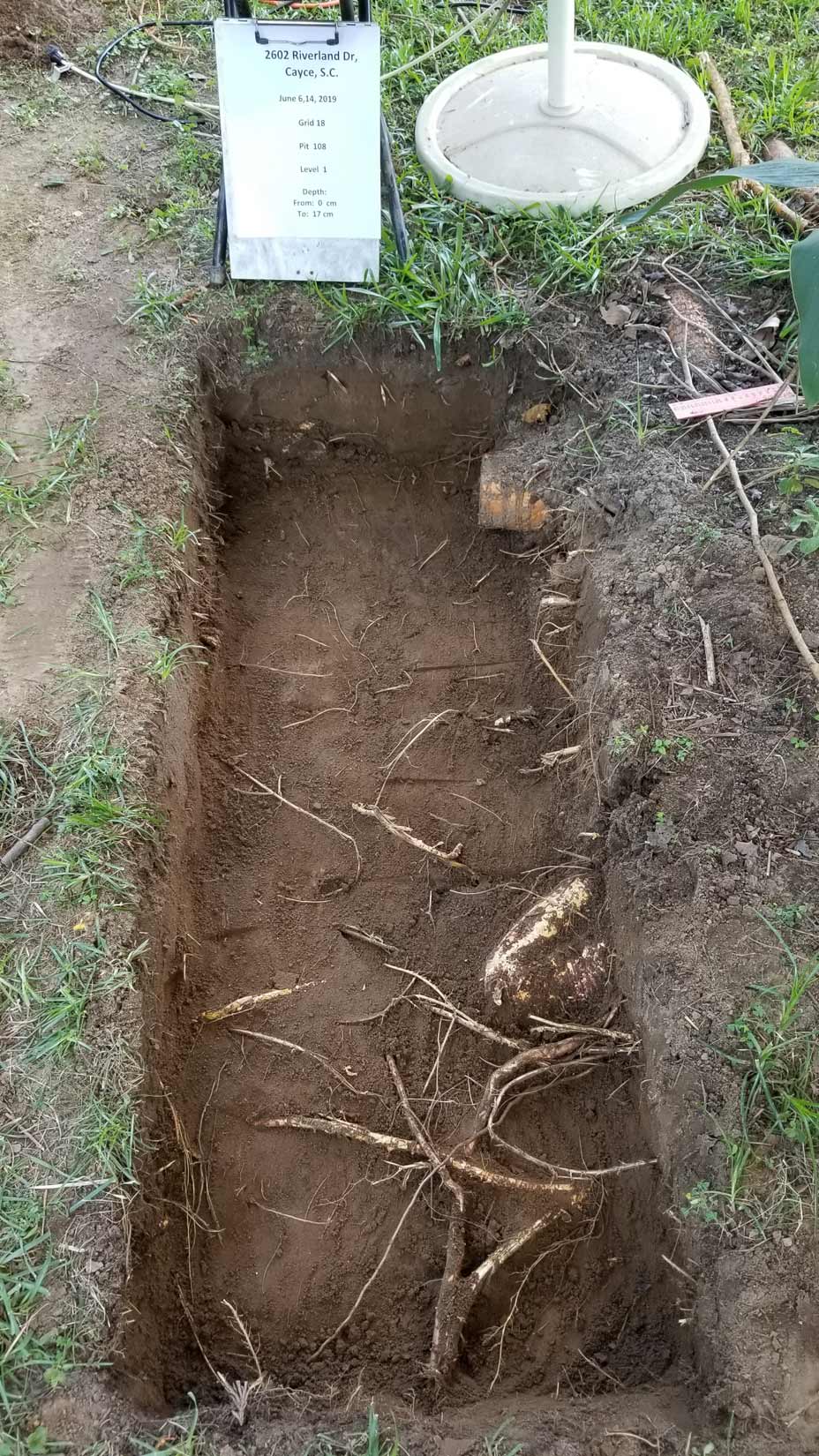
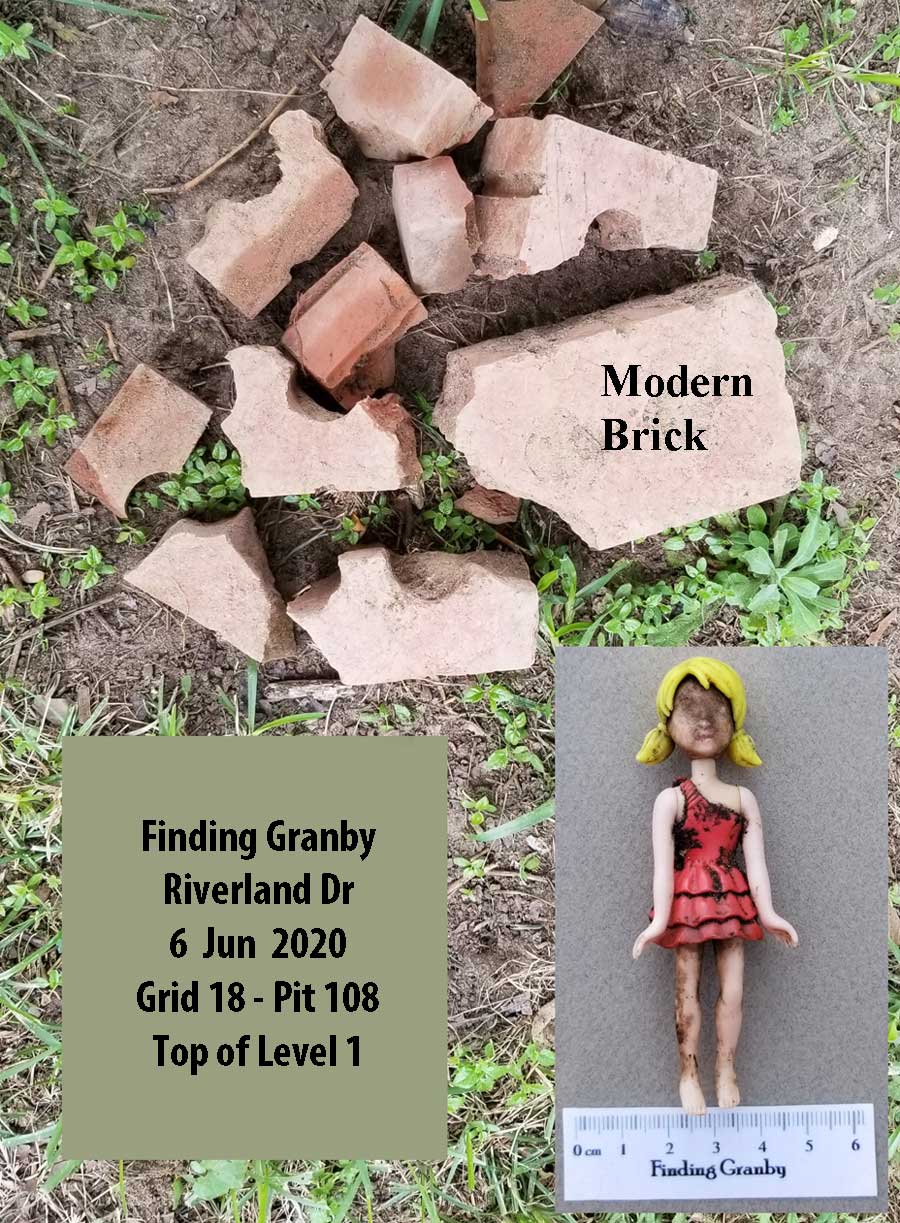
Above: Under bricks from the 1990s, a special plastic doll and her story of the first family of the dig house. Below: The 1987 Obituary for Aaron Herman; the first owner of our Granby dig house and lot.
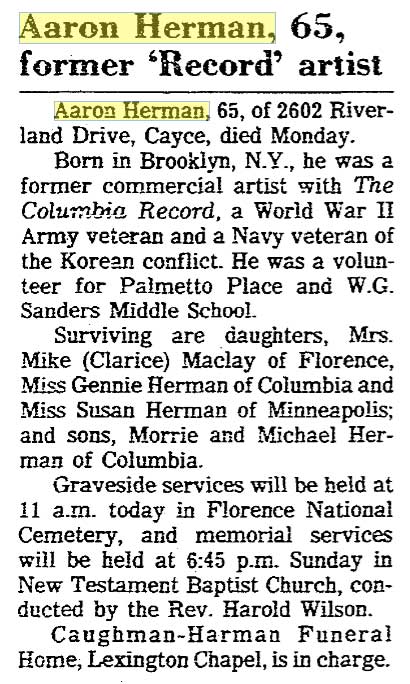
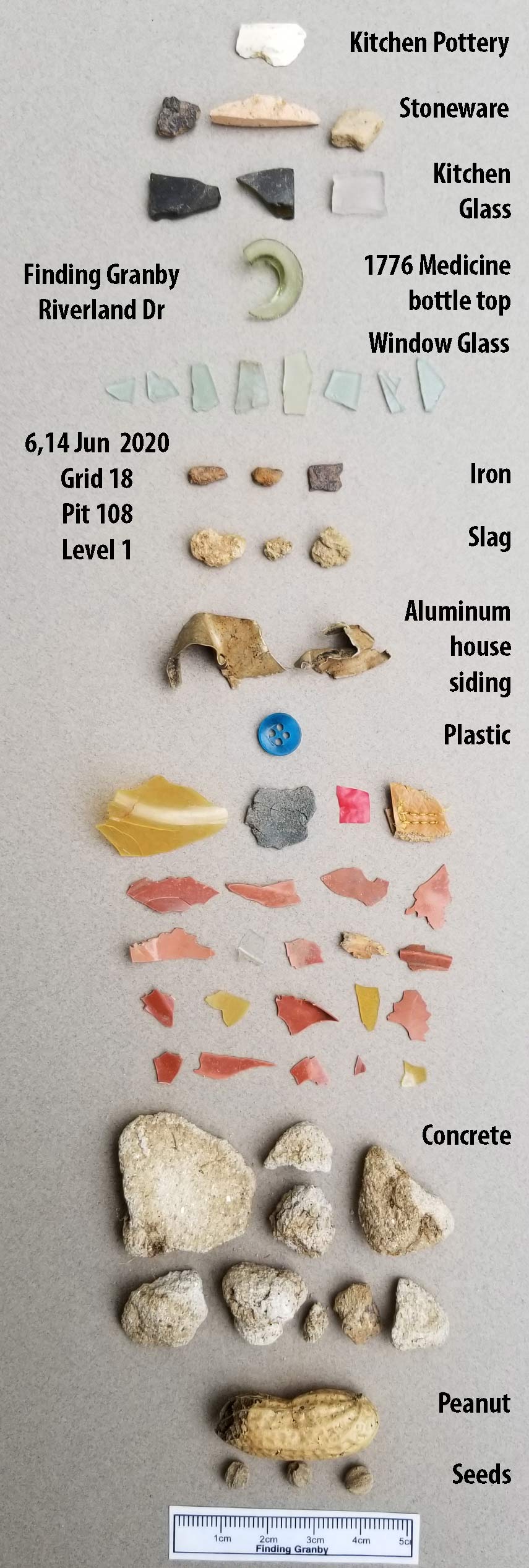
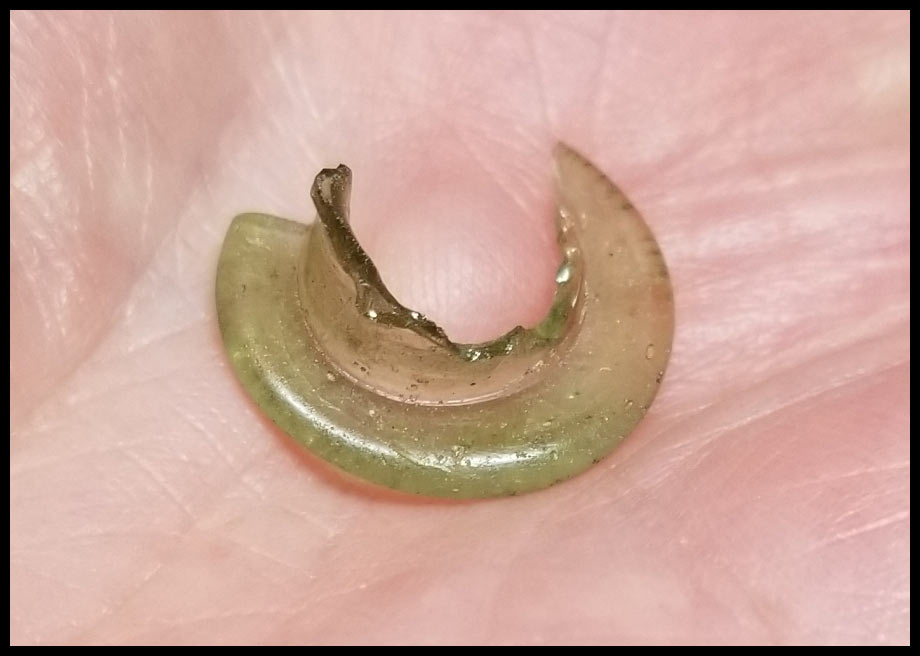
Above: The medicine bottle top. Below: Identification of the bottle.
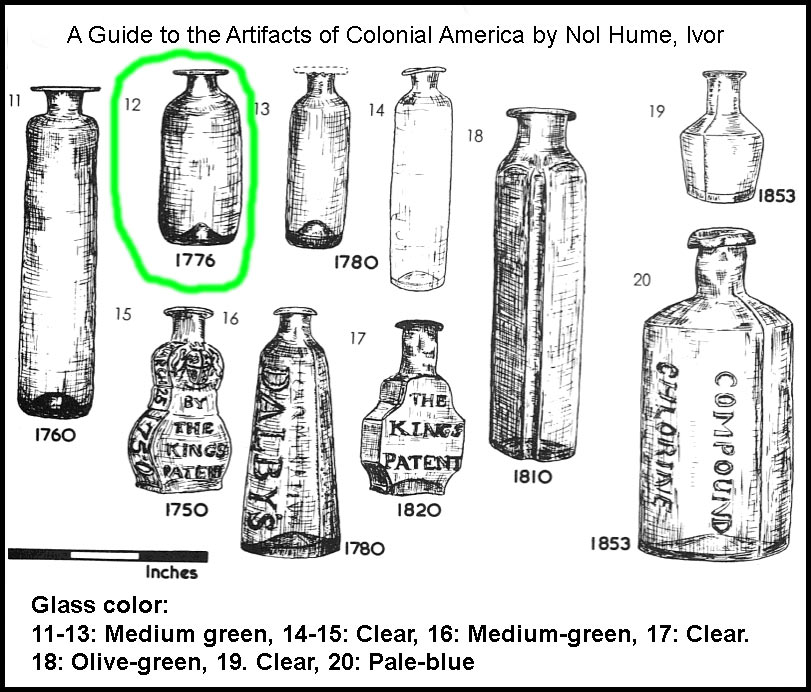
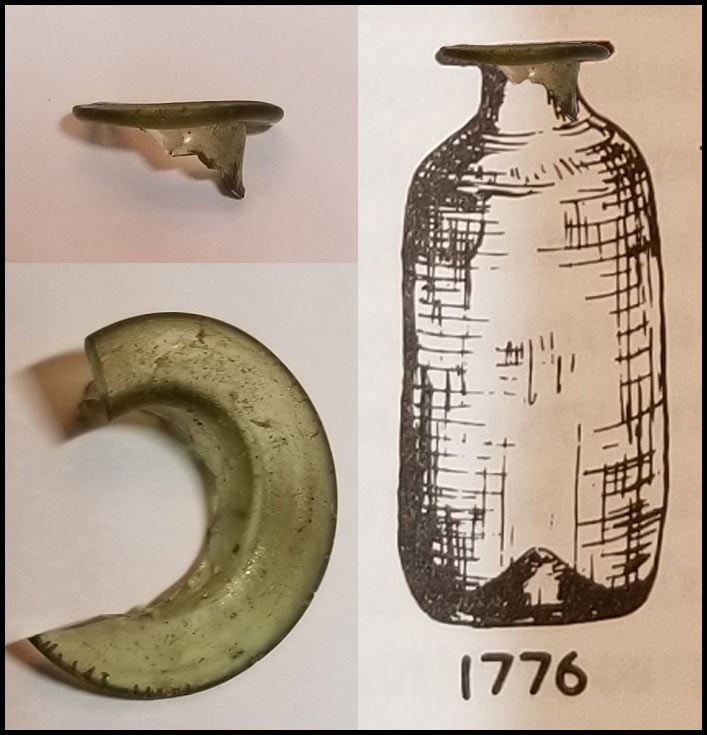
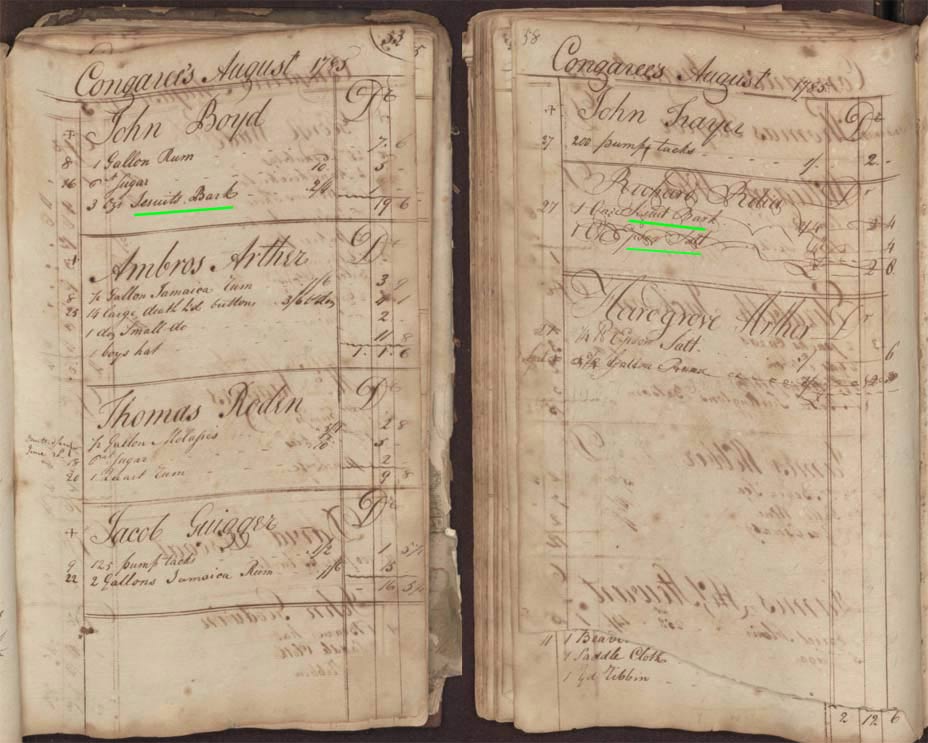
Above: Congarees Store account book entries for the drug Jesuit Bark (by the ounce) and Epson salt. Below: Turlington Balsam drug buys in the bottle.
